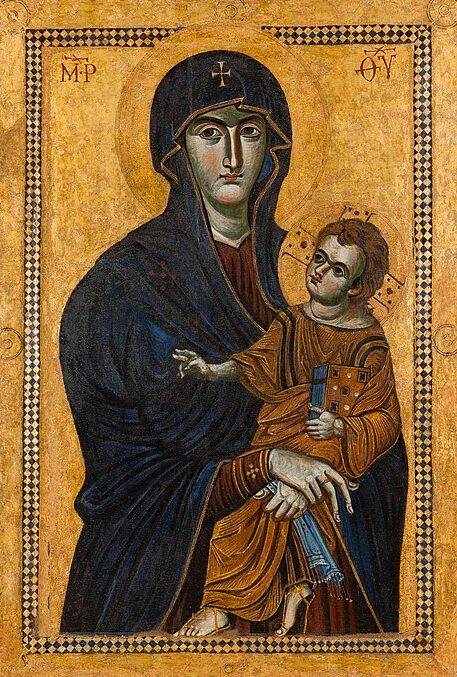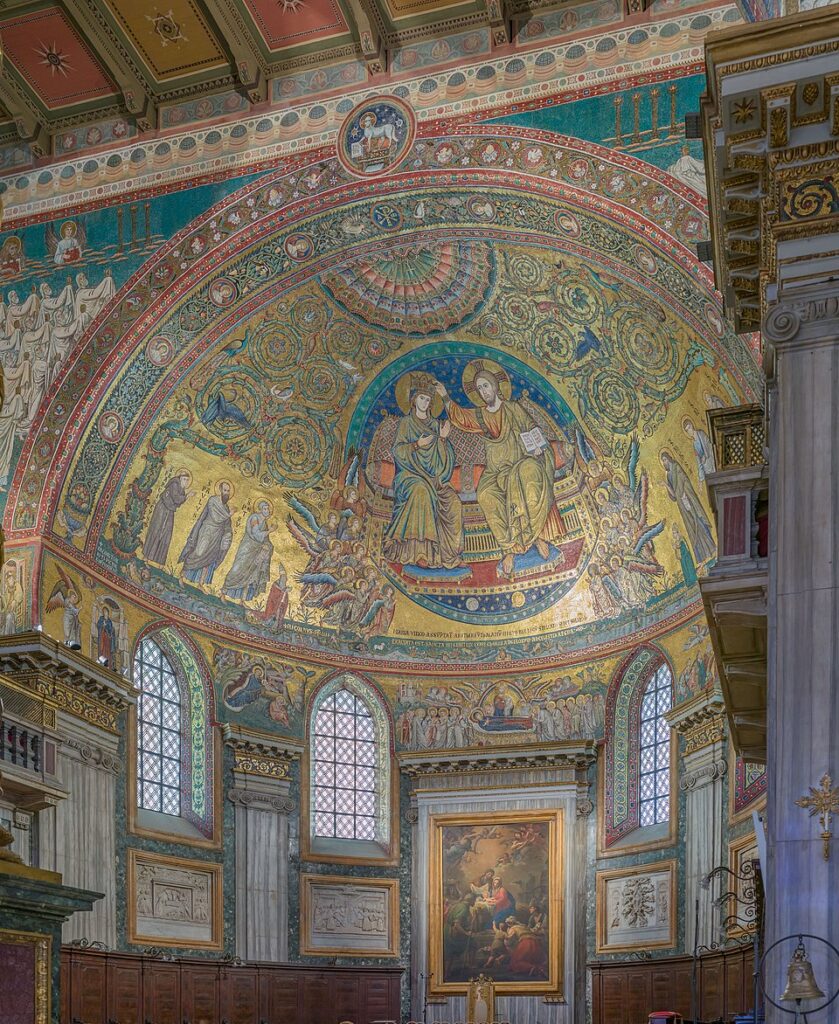Planning a trip to Rome and searching for the ultimate Santa Maria Maggiore guide? Whether you’re a pilgrim seeking spiritual inspiration, a history enthusiast eager to explore Rome Marian basilicas, or a traveller in need of practical Rome travel tips, the Basilica of Santa Maria Maggiore stands out as an essential destination. Famous for the Miracle of the Snow, its breathtaking mosaics, and now as the chosen Pope Francis burial site, this iconic church weaves together centuries of faith, art, and tradition at the heart of the Eternal City.

Step inside Santa Maria Maggiore, the crown jewel among Rome Marian basilicas, where ancient Roman marble and gold from the Americas create a dazzling sanctuary. This Santa Maria Maggiore guide reveals a church where 5th-century mosaics still shine, enchanting popes, artists, pilgrims, and travellers for over 1,500 years. As the largest Marian tribute in the West, it’s an architectural masterpiece and a living testament to faith, history, and enduring tradition.
History and motivation for construction
The Basilica of Santa Maria Maggiore, or Saint Mary Major, is one of the four papal basilicas of Rome and the largest church dedicated to the Virgin Mary in the city. Its origin dates back to the 4th century when, according to tradition, the Virgin Mary appeared in a dream to Pope Liberius and the patrician John, asking for a church to be built in her honour. The location would be indicated by a miracle: a snowfall in the middle of summer, on 5 August, covered the Esquiline Hill, pointing out the exact spot for construction. This episode became known as the “Miracle of the Snow” and is still celebrated today with a shower of white petals during the annual mass on 5 August.

The basilica was initially called Sancta Maria ad Nives (Saint Mary of the Snow) and later Santa Maria Maggiore, for being the largest of Rome’s Marian churches. Its definitive construction was carried out by Pope Sixtus III between 432 and 440, shortly after the Council of Ephesus, which proclaimed Mary as Mother of God — a dogma that cemented the central role of the Virgin in Christian devotion.
About the saint and her devotees
Santa Maria Maggiore is renowned as a Marian sanctuary, drawing pilgrims and travellers from around the world. Its revered “Salus Populi Romani” icon, said to be painted by Saint Luke, is a focal point for devotion and a highlight in any Santa Maria Maggiore guide. Pope Francis himself would visit this icon before and after his apostolic journeys, deepening the basilica’s spiritual significance and reinforcing its reputation among Rome Marian basilicas.

The basilica also houses the relic of the Holy Crib, fragments of Jesus’ manger, kept in a crystal reliquary in the Chapel of the Nativity. No wonder the temple is called the “Bethlehem of the West” and was the stage for the first Midnight Mass, a tradition maintained for centuries by the popes.
Devotees who visit Santa Maria Maggiore come from all over the world, seeking not only art and history but also spiritual solace, jubilee indulgences, and the feeling of being in a place where the divine touched the earthly.
Traditions and festivals
- Feast of the Dedication (5 August): Re-enactment of the Miracle of the Snow with white petals falling from the ceiling—a poetic celebration in Rome.
- Papal Visits: Popes traditionally visit the basilica on special occasions, especially before important journeys.
- Celebration of Midnight Mass: The basilica is known as the “Bethlehem of the West” as it houses fragments of Jesus’ manger. The Midnight Mass celebrated there is one of Rome’s most traditional.
- Marian processions and celebrations: The Salus Populi Romani icon is carried in procession during times of crisis, epidemics, or major feasts, as has happened in pleas for the end of plagues and, more recently, during the COVID-19 pandemic.
Construction details and works of art
The basilica is a true compendium of architectural and artistic styles, reflecting Rome’s transformations over 16 centuries:
- Early Christian Mosaics: The mosaics on the triumphal arch and nave, dating from the 5th century, are among the oldest and best-preserved in Christendom, depicting scenes from the childhood of Jesus and the life of Mary.
- Sistine and Pauline Chapels: Not to be confused with the famous one in the Vatican! Here, the Sistine Chapel (of Pope Sixtus V) and the Pauline Chapel (of Pope Paul V) are Renaissance and Baroque gems, housing papal tombs and the Salus Populi Romani icon.
- Gilded Ceiling: A golden legend: the ceiling was decorated with the first gold brought from the Americas by Christopher Columbus, donated by the Catholic Monarchs of Spain. Its shine symbolises Mary’s royalty as Queen of Heaven.
- Columns and Nave: The central nave is flanked by 40 Ionic columns, some repurposed from ancient Roman temples, and the cosmatesque floor is a medieval geometric spectacle.
- Relics: Besides the Marian icon, the basilica guards fragments of Jesus’ manger, displayed in the so-called “Crypt of the Nativity”.

Popes and notable figures buried here
Over the centuries, seven popes have been buried in Santa Maria Maggiore, the last being Clement IX in 1669. The site also houses the tombs of figures such as the sculptor Gian Lorenzo Bernini and his father, Pietro Bernini, as well as saints like St Jerome and St Matthias.
Pope Francis: An unusual burial
In a gesture that broke with over a century of tradition, Pope Francis has chosen the Basilica of Santa Maria Maggiore for his burial, rather than in the Vatican crypt as had been customary since 1903. This has made the basilica a site of renewed interest for those following the legacy of Pope Francis’ burial.
Francis had a special relationship with the temple, where he would pray before the “Salus Populi Romani” icon before and after his journeys, and where he began his pontificate in 2013. His burial in the basilica, in a discreet spot near the sculpture of the Queen of Peace, strengthens the bond between the pontiff and popular Marian devotion.
“I wish my last earthly journey to conclude precisely in this ancient Marian sanctuary, where I would go to pray at the beginning and end of every Apostolic Journey, to confidently entrust my intentions to the Immaculate Mother and thank her for her gentle and maternal care.”
— Pope Francis, in his will
“Just after the sculpture of the Queen of Peace (Virgin Mary), there is a small room, a door that leads to a space they used to store candlesticks. I saw it and thought: ‘That’s the place’. And the burial site is already prepared there.”
— Pope Francis, in an interview with Vatican journalist Javier Martinez-Brocal
Tips and guide for tourists
How to get there
- Address: Piazza di Santa Maria Maggiore, 00100 Rome.
- Access: Easily reached on foot from Termini Station (Metro lines A and B). Also accessible by several bus lines, such as 16, 70, 71, and 714.
Opening hours and tickets
- Basilica: Open daily from 7am to 7pm. Free entry.
- Museum: Open from 9:30am to 6:30pm. Worth a visit for those who want to immerse themselves in the basilica’s history.
Disclosure: This post contains affiliate links that help support and maintain this website. If you click through and make a purchase, I may earn a small commission at no extra cost to you.
What to see
- 5th-century Mosaics: On the triumphal arch and in the nave.
- Salus Populi Romani Icon: In the Pauline Chapel.
- Relic of the Holy Crib: In the Chapel of the Nativity.
- Gilded Ceiling and Cosmatesque Floor.
- Sistine Chapel (of the basilica).
- Tomb of Bernini and the popes.
Full experience
- Guided Tours: Highly recommended to truly appreciate the historical and artistic richness of the site. Specialist guides lead groups for about 1 hour and 15 minutes, with the possibility of renting headphones so you don’t miss a thing.
- Virtual Tour: For those unable to visit Rome, the basilica offers a 360º virtual tour on its official website, allowing you to explore all areas with zoom and different angles.
- Dress Code: As in all Catholic temples, modest dress is required (no sleeveless tops, short shorts, or miniskirts).
Extra tips
- Avoid Mass times if you want to explore calmly, but do attend a service if you want to feel the site’s spiritual atmosphere.
- On 5 August, arrive early to secure a place at the Miracle of the Snow Mass.
- Set aside time for the museum and the Papal Hall, where ecclesiastical objects and works of art are displayed.
- Photography is permitted, but always with respect for the sacred environment.
Curiosities and additional facts
- The Basilica has had several names: Santa Maria ad Nives, Santa Maria Liberiana, Santa Maria at the Manger, until it became Santa Maria Maggiore, as it is the largest church dedicated to the Virgin Mary in Rome.
- The gold on the ceiling was the first brought from the Americas, donated by the Catholic Monarchs of Spain in gratitude to the Church.
- The basilica hosted historic events, such as the approval of the use of Old Slavonic in liturgy, welcoming Cyril and Methodius in 867.
- The main façade was built for the Holy Year of 1750, with the Loggia of Blessings dominating the entrance.
- The 75-metre bell tower is the tallest in Rome and can be seen from various points in the city.
- During jubilees, passing through the four holy doors of Rome’s papal basilicas, including Santa Maria Maggiore, grants a plenary indulgence.
Conclusion: Why visit Santa Maria Maggiore?
Santa Maria Maggiore is more than a monument—it’s the ultimate Santa Maria Maggiore guide for anyone seeking a living compendium of Christian history, Western art, and popular devotion. Whether you’re a pilgrim, art lover, or traveller in search of Rome Marian basilicas and unique Rome travel tips, the basilica promises an unforgettable journey through centuries of faith and beauty. With the addition of the Pope Francis burial site, Santa Maria Maggiore now stands as a powerful link between the Catholic Church’s past, present, and future.
If you are seeking a place where the sacred meets the sublime, Santa Maria Maggiore is a must-visit in Rome. After all, it’s not every day you can walk beneath millennia-old mosaics, admire gold from the Americas, and, to top it off, feel part of a tradition that has boldly endured through the centuries.



